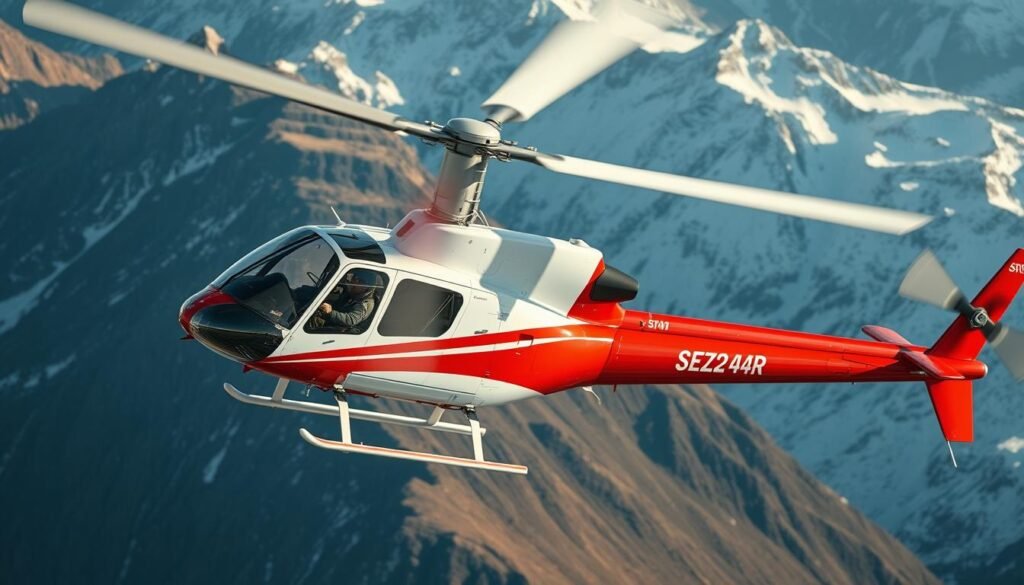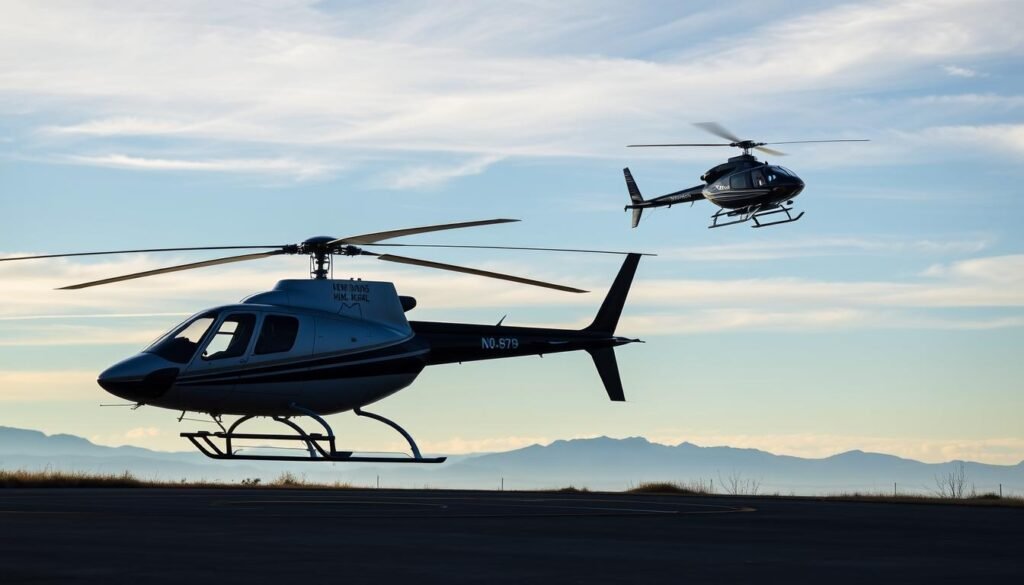“To me, aviation is proof that given the will, we have the capacity to achieve the impossible.” — Amelia Earhart.
Introduction: This guide outlines the roadmap from first flight to a competitive EMS pilot profile. It covers initial training, the sequence of certificates, and the operational standards that define lifesaving missions.
Many candidates start with a Private Pilot certificate and add an Instrument Rating, then earn a Commercial certificate. Maintaining an FAA medical is essential. Employers typically seek 1,000–2,000 hours with turbine time, night, cross-country, and IFR experience.
The role demands precise, time-critical work with close crew coordination among pilots, paramedics, and flight nurses. Proven paths for building hours include flight instructing, tours, and survey work.

For a full, step-by-step roadmap and practical tips, see this detailed guide on training and requirements and explore hiring trends at top operators.
Key Takeaways
- Start with a Private Pilot certificate, then add Instrument and Commercial ratings.
- Maintain the required FAA medical and build turbine, night, and IFR experience.
- Employers favor 1,000–2,000 total hours and proven operational skills.
- Flight instructing and tour work are efficient ways to gain hours.
- EMS missions require quick decisions, teamwork, and strong situational knowledge.
What A Medevac Helicopter Pilot Does
EMS flights demand pilots who balance urgency with procedure, ensuring rapid transport while minimizing risk.
Core Responsibilities In Air Ambulance Operations
Primary duty: Safe, rapid patient transport in an air ambulance that balances clinical urgency with strict procedures.
Pilots perform thorough pre-flight checks. They inspect the aircraft, confirm weight and balance, plan fuel and review weather. Landing zone assessment is routine before launch.
Operating Conditions, Crew Coordination, And Safety Protocols
Pilots coordinate closely with paramedics and flight nurses. They manage medical stowage, supervise patient loading, and keep clear radio protocols during emergency services.
- Operate in low ceilings, marginal visibility, and confined landing areas while respecting operational limits.
- Apply workload management, crew resource management, and decisive action under stress.
- Communicate with dispatch, ATC, ground crews, and hospitals for safe handoffs.
- Document flights, log incidents, and follow regulations and company SOPs.
“Reliable, efficient air transport is often outcome-critical; professional standards and knowledge are non-negotiable.”
For specific role descriptions and operational challenges, review an air-ambulance job descriptions page and the piece on challenges in emergency operations.
Prerequisites And FAA Medical Requirements
A valid FAA medical is the foundation that keeps air ambulance operations safe and legal.
Most EMS operators require a first- or second-class FAA medical before any advanced pilot certificate work begins. An Aviation Medical Examiner (AME) evaluates vision, hearing, cardiovascular health, and general fitness. These checks ensure pilots meet the physical demands of emergency flight.
Renewals occur at set intervals depending on class and age. Pilots must schedule exams early and keep records current to avoid gaps that derail training or hiring timelines.
First- Or Second-Class FAA Medical Certificate: Eligibility And Exams
The AME focuses on eyesight, hearing, heart health, and chronic conditions. Employers may prefer first-class clearance for higher-responsibility roles. Maintaining documentation helps protect training time and test eligibility for certificates and ratings.
Renewals, Fitness Standards, And Staying Flight-Ready
Medical readiness ties directly to real-world conditions such as fatigue, night operations, and high workload. Pilots need regular health habits and proactive care to sustain performance and meet operational skills demands.
| Medical Class | Typical Renewal Cadence | Operational Impact |
|---|---|---|
| First-Class | Every 6–12 months (age-dependent) | Preferred for high-responsibility EMS roles |
| Second-Class | Every 6–24 months (age-dependent) | Meets baseline requirement for many operators |
| Practical Notes | Schedule renewals early | Protects training timelines and operational currency |
“Proactive health management preserves availability, supports testing success, and strengthens long-term aviation careers.”
Step-By-Step: Training, Licenses, And Ratings
Progress follows a clear syllabus that pairs classroom study with increasing in-air responsibility.
Earn A Private Helicopter Pilot Certificate
The first step is ground school and dual instruction. Students typically log 40–60 hours to reach proficiency, with Part 141 programs sometimes offering lower minimums.
Expect a written exam and a practical test that includes basic maneuvers, emergency procedures, and navigation.
Add A Helicopter Instrument Rating For IFR Operations
An instrument endorsement expands capabilities for low-visibility work. It requires both written and practical exams focused on instrument navigation and procedures.
This rating raises procedural knowledge and improves safety during marginal weather—an asset for EMS operations.
Obtain A Commercial Pilot Certificate (Part 141 Considerations)
Under Part 141 the commercial certificate calls for at least 115 total hours. Training covers advanced maneuvers, night work, and cross-country flight.
Tests evaluate systems knowledge, precision flying, and decision-making under pressure.
Consider A Certified Flight Instructor Path To Build Experience
Becoming an instructor accelerates hour building and sharpens teaching, SOP discipline, and risk management. Many aviators use this route to reach employer thresholds.

“Structured training and continued proficiency are the backbone of safe emergency aviation operations.”
For a practical training roadmap consult this step-by-step guide that outlines program choices and testing expectations.
Building Flight Hours And Turbine Time For EMS Readiness
Building credible hours requires a plan that blends steady jobs with targeted skill practice.

Strategies To Accumulate Flight Hours
Instructing remains one of the fastest ways to earn hours while refining teaching and SOP discipline.
Seasonal tour flying and aerial survey work add predictable sorties and varied conditions. Early roles in law enforcement or utility work expose pilots to mission-driven dispatch and real-time weather decisions.
Logging Turbine Time On EMS-Relevant Aircraft
Turbine experience matters because system complexity, power management, and performance mirror air ambulance platforms.
Progress from piston machines into turbine helicopters, then seek aircraft that match EMS types. That progression eases hiring transitions and improves on-the-job readiness.
Night, Cross-Country, And Instrument Experience Employers Value
Employers typically want 1,000–2,000 total hours, with night currency, cross-country judgment, and solid instrument skills.
Track flights, hours, and category totals in a disciplined logbook. Add structured instrument practice and recurrent training while stacking safe weekly flying blocks to accelerate growth.
Focus On A Clean Safety Record And Verifiable References Alongside Raw Hours.
How to Become a Medevac Helicopter Pilot: Licensing & Career Path
The training sequence centers on earning foundational certificates, then layering instrument and commercial ratings for EMS readiness.
Start with a solid pilot certificate and thorough flight training that goes beyond minimum hours. Emphasis should be on instrument procedures and turbine familiarization since operators value applied experience over bare totals.
Additional training sharpens operational knowledge. NVG exposure, crew resource management, and company SOP drills improve coordination and decision-making during missions.
Passing each written and practical test with mastery is essential. Employers screen for clean records, verified hours, and demonstrated ratings that map directly to cockpit duties and crew interaction.
| Certificate / Rating | Primary EMS Role | Training Focus |
|---|---|---|
| Private Pilot Certificate | Basic aircraft control, VFR mission work | Aircraft handling, navigation basics |
| Instrument Rating | IFR flights, marginal weather | Instrument procedures, approaches, cross-country |
| Commercial Pilot Certificate | Professional operations, paid flights | Advanced maneuvers, night work, systems knowledge |
| Additional Training | EMS-specific duties | NVG, CRM, turbine systems, SOPs |
Choosing a Part 141 program or a structured syllabus can improve consistency, aid hours tracking, and strengthen test readiness.
Align training milestones with hiring timelines and targeted operator requirements. For program options and hiring advice, review this training overview and a practical step guide.
Career Progression, Skills, And Real-World Considerations
Progression in air ambulance work moves from foundational flying tasks toward leadership roles that demand judgment under pressure.
Decision-Making, Communication, And Regulatory Knowledge
Crisp decision-making and disciplined communication drive growth in this field. Pilots must apply FAA rules, local procedures, and EMS protocols during missions.
Clear radio calls, crew briefings, and documented compliance reduce risk and improve patient transport outcomes.
Financial Commitment And Training Investment In The United States
Training requires steady funding for tuition, aircraft rental, exams, and medical renewals. Living costs during intensive training add significant expense.
Budgeting, loans, and targeted scholarships help candidates bridge gaps and reach the hourly thresholds employers expect.
Continuous Learning, Technology Adoption, And Leadership Opportunities
Ongoing development keeps pilots competitive. Mastery of new avionics, weather tools, and SOP updates matters as much as raw experience.

- Progress from low-hour pilot jobs into EMS roles, then into lead pilot or check airman positions as experience grows.
- Use after-action reviews, recurrent training, and mentoring to convert experience into reliable performance.
- Balance mission demands with safety margins to protect crews, patients, and assets under tough conditions.
“Long-term resilience rests on health, time management, and structured training aligned with operational duties.”
| Phase | Focus | Outcome |
|---|---|---|
| Entry Jobs | Hour building, basic instruments | Documented experience and references |
| Transition Roles | Turbine time, night, IFR | EMS readiness and hiring eligibility |
| Leadership | Instruction, standardization, safety committees | Lead pilot roles and career stability |
For insights on pay progression tied to this trajectory, consult an overview of pilot compensation here.
Conclusion
A focused plan that pairs staged training with deliberate hour building yields the strongest candidates for EMS services.
Start with foundational pilot certificates, add an instrument rating, then pursue the commercial pilot certificate and turbine exposure on EMS-relevant aircraft.
Diversified flight time across night, cross-country, and IFR conditions sharpens judgment and safety margins. Many build hours as a flight instructor or in tour and survey jobs to gain real-world experience.
Maintain medical currency, pass required tests, and document competencies. Track each step and align training milestones with targeted jobs.
For a practical roadmap and hiring advice, review this air ambulance career guide.
FAQ
What does an air ambulance pilot do during missions?
An air ambulance pilot flies rotary-wing aircraft for medical evacuations, manages navigation and aircraft systems, and coordinates with flight medics and ground units. They perform preflight risk assessments, monitor weather and terrain, execute takeoffs and landings in confined areas, and follow strict safety protocols to protect patients and crew during transport.
What core responsibilities count for in air ambulance operations?
Core responsibilities include mission planning, aircraft performance calculations, weight-and-balance checks, and clear communication with medical personnel and dispatch. Pilots must adhere to company operating procedures, maintain situational awareness in dynamic environments, and log all flights, incidents, and maintenance discrepancies according to FAA rules.
What operating conditions and crew coordination are typical for EMS flights?
EMS missions often occur at night, in marginal weather, and at unimproved landing sites. Crew coordination requires standardized briefings, sterile cockpit practices during critical phases, and mutual support between pilot and medical crew. Pilots use checklists and CRM (crew resource management) techniques to manage workload and risks effectively.
Which FAA medical certificate is required for commercial EMS work?
Commercial operations normally require at least a second-class FAA medical certificate. Some operators prefer a first-class for pilot career flexibility, but the second-class meets the medical fitness standard for commercial rotorcraft pilots performing air ambulance duties.
What medical exams and eligibility standards apply?
Candidates undergo an Aviation Medical Examiner evaluation that checks vision, hearing, cardiovascular health, neurological status, and mental fitness. Certain disqualifying conditions can be mitigated with special issuance authorization. Maintaining documented medications and records is essential for certification.
How often must pilots renew their medical certificates?
Renewal intervals depend on certificate class and age: a second-class medical generally requires renewal every 12 months for most pilots. Pilots should track expiration dates closely and schedule exams early to avoid operational gaps.
What are the first steps in training for rotorcraft EMS work?
Initial steps are earning a private helicopter pilot certificate, logging required dual and solo flights, and passing knowledge and practical tests. Training includes basic maneuvers, emergency procedures, and cross-country navigation, all taught at FAA-approved flight schools or under Part 61 instruction.
Why add an instrument rating for helicopter IFR operations?
An instrument rating enables flight in reduced visibility and under IFR, increasing mission capability and safety. EMS providers value instrument-qualified pilots because they reduce weather-related cancellations and expand operational windows for critical patient transfers.
What does obtaining a commercial helicopter pilot certificate require?
The commercial certificate requires higher flight-hour minimums, advanced maneuvers, and a commercial checkride with an FAA examiner. Training can follow Part 61 or structured Part 141 syllabi; Part 141 often shortens required hours but demands a formal curriculum and FAA-approved school oversight.
How can becoming a certified flight instructor help build experience?
Flight instruction provides high-quality, paid flight hours and refines a pilot’s teaching, decision-making, and emergency management skills. CFI time is highly regarded by EMS employers because it demonstrates proficiency, command presence, and the ability to mentor other crewmembers.
What are effective strategies for accumulating flight hours relevant to EMS?
Useful strategies include instructing, working tour or charter flights, aerial survey work, and banner towing. Those roles build helicopter time, cross-country experience, and exposure to varied operational environments—skills transferable to air ambulance missions.
How can pilots log turbine time in EMS-relevant aircraft?
Pilots gain turbine hours by transitioning to turbine-powered helicopters such as the Airbus H125, Leonardo AW109, or Bell 407 and flying for utility, offshore, or charter operators. Transition training, type-specific instruction, and supervised PIC time are common routes to build turbine experience.
What night, cross-country, and IFR experiences do employers value most?
Employers prioritize logged night flight, cross-country PIC time, and actual IFR flight experience, including approaches and holds. Demonstrated proficiency in night vision goggle operations, low-level navigation, and instrument approaches shows readiness for EMS demands.
What decision-making and communication skills matter for medevac crews?
Rapid risk assessment, assertive communication, and structured briefings are critical. Pilots must make go/no-go calls, coordinate with ATC and medical teams, and manage human factors under pressure. Clear, concise communication helps ensure patient safety and mission success.
What are typical training costs and financial commitments in the United States?
Total costs vary widely but can reach $70,000–$150,000 for private through commercial helicopter training, instrument ratings, and initial turbine transition. Costs depend on school type, aircraft rental rates, and required hours. Budgeting for recurrent training and exam fees is also necessary.
How important is continuous learning and technology adoption for EMS pilots?
Continuous training in advanced avionics, night vision systems, and emergency procedures keeps pilots current and competitive. Operators expect ongoing proficiency checks, scenario-based training, and familiarity with systems like glass cockpits, ADS-B, and electronic flight bags.
What leadership opportunities exist as pilots advance in EMS careers?
Senior pilots can move into roles such as chief pilot, chief of training, operations manager, or safety officer. These positions involve program development, pilot hiring, regulatory compliance, and fleet management—leveraging operational experience into organizational leadership.
leveraging operational experience into organizational leadership.



